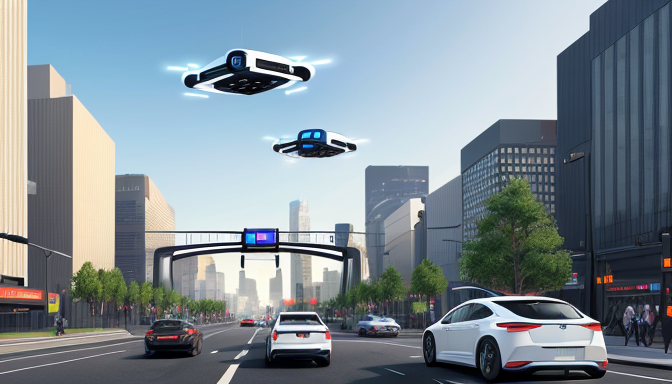As we zoom into the future, the automotive landscape is transforming at an astonishing pace. Imagine a world where your car not only drives itself but also understands your preferences and adjusts to your mood. Automotive technology is no longer just about horsepower and sleek designs; it’s about creating a seamless driving experience that integrates artificial intelligence and smart connectivity.
One of the most exciting advancements is the rise of AI-driven systems that enhance safety and efficiency. These systems can analyze vast amounts of data in real-time, making split-second decisions that could save lives. Think about it: your car can predict potential hazards before you even see them! This level of intelligence is a game-changer, making roads safer for everyone.
But it’s not just about self-driving cars. The future of auto tech is also brimming with smart features that cater to our daily needs. From in-car assistants that can manage your schedule to vehicles that communicate with each other to avoid traffic jams, the possibilities are endless. Imagine your car autonomously finding the best route while you kick back and relax.
As we embrace these innovations, we must also consider the challenges ahead, such as regulatory hurdles and the need for robust infrastructure. Yet, the potential is undeniable. The future of driving is not just about getting from point A to B; it’s about transforming every journey into an experience that is safe, efficient, and personalized.
The Rise of Electric Vehicles
Electric vehicles (EVs) are not just a passing trend; they are revolutionizing the automotive landscape. Imagine a world where your car runs on clean energy, reducing your carbon footprint and saving you money on fuel. That’s the promise of EVs! With advancements in battery technology, the range of electric cars is expanding, making them more viable for everyday use.
One of the most compelling benefits of EVs is their sustainability. Unlike traditional gasoline vehicles, electric cars produce zero tailpipe emissions, contributing to cleaner air and a healthier planet. But let’s not sugarcoat it—there are challenges to overcome. Charging infrastructure is still developing, and the initial cost of EVs can be higher than their gas-powered counterparts. However, as technology evolves and production scales up, prices are expected to drop.
Looking into the future, we can expect several exciting trends in the EV market:
- Increased Range: New battery technologies are emerging, promising longer drives on a single charge.
- Smart Features: AI-driven systems will enhance the driving experience, making it safer and more efficient.
- Integration with Renewable Energy: Imagine charging your car with solar energy—it’s closer than you think!
As we drive into this exciting future, it’s clear that electric vehicles are paving the way for a more sustainable and technologically advanced transportation system. Buckle up; the ride is just beginning!

Autonomous Driving Innovations
Welcome to the thrilling world of autonomous driving innovations! Imagine a future where your car drives itself, allowing you to kick back and enjoy the ride. Sounds like science fiction, right? But this is quickly becoming our reality, thanks to groundbreaking advancements in AI driving systems and smart features. These technologies are not only transforming how we think about transportation but are also paving the way for a safer and more efficient driving experience.
At the heart of this revolution are artificial intelligence and machine learning algorithms that enable vehicles to analyze their surroundings, make decisions, and learn from experiences. For instance, self-driving cars are equipped with a plethora of sensors and cameras that provide a 360-degree view of the environment. This allows them to detect obstacles, recognize traffic signals, and even predict the behavior of pedestrians. It’s like giving your car a brain!
However, the road to fully autonomous vehicles isn’t without its bumps. Regulatory hurdles and safety concerns are significant challenges that developers face. Governments around the world are still figuring out how to create laws that keep passengers safe while fostering innovation. Moreover, public perception plays a crucial role—many people still feel uneasy about relinquishing control to a machine.
As we look ahead, the implications of these innovations are profound. Imagine a world where traffic accidents are significantly reduced, commute times are optimized, and urban congestion is alleviated. Autonomous driving isn’t just about convenience; it’s about reshaping our cities and enhancing our quality of life. Are you ready to embrace this exciting journey into the future?
Frequently Asked Questions
- What are the main benefits of electric vehicles (EVs)?
Electric vehicles offer a cleaner, greener alternative to traditional gas-powered cars. They produce zero tailpipe emissions, which significantly reduces air pollution. Plus, EVs can save you money on fuel and maintenance costs in the long run!
- How does autonomous driving technology work?
Autonomous driving relies on a combination of sensors, cameras, and advanced algorithms to navigate and control the vehicle. Think of it like having a super-smart co-pilot who can see everything around you and make split-second decisions!
- What are the challenges facing the adoption of EVs?
While EVs are gaining popularity, there are still hurdles to overcome, such as limited charging infrastructure and higher upfront costs. However, as technology improves and more charging stations pop up, these issues are gradually being addressed.
- Are self-driving cars safe?
Safety is a top priority for autonomous driving technology. While no system is foolproof, studies show that self-driving cars can reduce human error, which is a leading cause of accidents. The future looks promising, but ongoing testing and regulation are crucial!